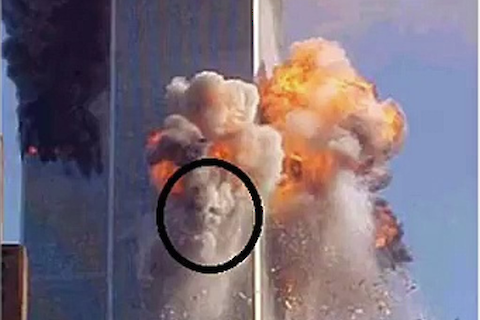

Pareidolia, why we see things that aren't there
Pareidolia is one of the first things that any paranormal investigator becomes familiar with. It is a concept that we really already know about, but we fail to understand how much an effect this common ‘trick of the mind’ can influence us in the paranormal and covers a lot more areas than you may think.
A typical scenario in every paranormal investigator’s adventures is that they are presented in person or by email or social media etc with a photo. There is a picture of a house with windows. In one of the windows, they think they can see a figure. It does look like a figure and it is wearing a hat and everything! Upon closer inspection of the photo, you notice the windows are dirty and there are smudge marks. What you have been looking at was not a mysterious hat-wearing entity in the window, but merely your brain playing tricks on you.
What is pareidolia?
This is what you hear most investigators refer to as ‘Matrixing’ or ‘Pareidolia’. In a nutshell, your brain is trying to make sense of what it is looking at, so it makes you think you are looking at something you can familiarize yourself with. Think about it. How many times do you look into the clouds and think you see a man riding a horse or you look in the shower and on your steamy window you see a face or even a weird smiley face appearing on the brickwork of your house? This is the perfect example of Pareidolia.
This phenomenon is a form of apophenia which is where the brain tries to make sense out of patterns of data. It is thought that this psychological phenomenon was a form of survival that we inherited from our ancestors.
"As soon as the infant can see, it recognizes faces, and we now know that this skill is hardwired in our brains. Those infants who a million years ago were unable to recognize a face smiled back less, were less likely to win the hearts of their parents, and less likely to prosper."
Carl Sagan
The Demon Haunted World 1995
If a baby did not recognize its parents, it would interact and smile less. It is thought that the brain was 'wired' to recognize faces to be able to form bonds with its parents. When your child sees your face, it often lights up with a smile, even from those early weeks. The brain was trained to recognize faces.
Famous examples of pareidolia
Some of the more famous images are a favourite of conspiracy theorists such as seeing a face on the moon or devilish faces in the smoke of the twin towers burning.
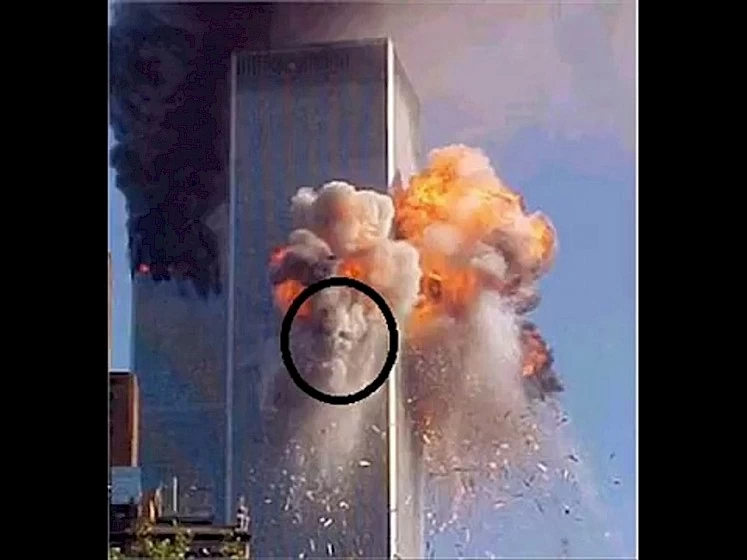
Source: Daily Motion
Famous faces in the 9/11 tragedy. Is it an ominous sign or just our brains? This was featured in publications worldwide advertising 'The Devil's Face'.
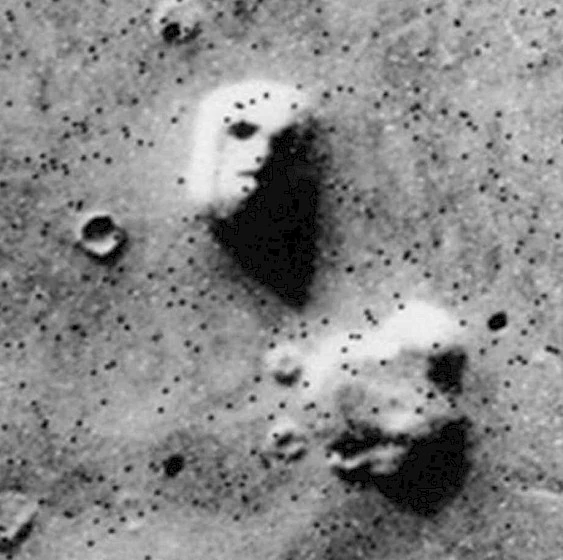
Source: Amino Apps
Is this proof of life on mars? More just proof our brains are up to tricky business
Pareidolia and paranormal investigating
People get very protective when it comes to their photographs. If it is something they have taken, there is a personal connection and attachment to the photo. When you tell them it is a case of pareidolia, in a lot of cases they will get defensive and reject your completely rational theory. All you can do is present someone with the facts. This is one of the reasons why a lot of seasoned paranormal investigators will not review photos for others. On the other end of the spectrum, some skeptics cling to the pareidolia phenomena and think all photos can be explained simply by our mind playing tricks on us. When you incorporate this with all of the natural things that can happen with photos like lens flare and dust orbs, photos really are an unreliable form of providing evidence of the paranormal. The mere concept that pareidolia exists means that no photo will ever give a skeptic any sort of proof that what they are looking for cannot be explained rationally. I am not saying that it is not possible to capture something paranormal on camera. I personally believe it could be possible, but I also believe that people need to properly understand how both cameras and the human mind work and to keep all of this in mind when analyzing photos. It is the photos that I cannot debunk that I take a genuine interest in and there is a handful over the years that I have not been able to explain. When it comes to reviewing photos, you really need to wear your investigator cap and look at things from all angles.
My own examples of pareidolia
Here is a perfect example of pareidolia which is not so obvious at first and it is where the investigator part of you needs to kick in. During an investigation I did at Aradale Lunatic Asylum a few years ago, my brother did a walkthrough of the building filming on his phone while we were setting up. Upon review of the footage, it appeared we had caught a scary-looking girl (that looked like she had escaped from the ring movie) standing in the corner in a hospital gown. Perfectly understandable I mean we were investigating an old mental asylum. After a lot of review from other footage and photos we had of the area, we discovered that it was merely markings on the wall. Were we a little disappointed? Of course but this is what it is all about. Being an investigator is different from being a ghost hunter. A ghost hunter tries to find ghosts. An investigator is researching paranormal phenomena and debunking. Rationalizing things is a big part of that.
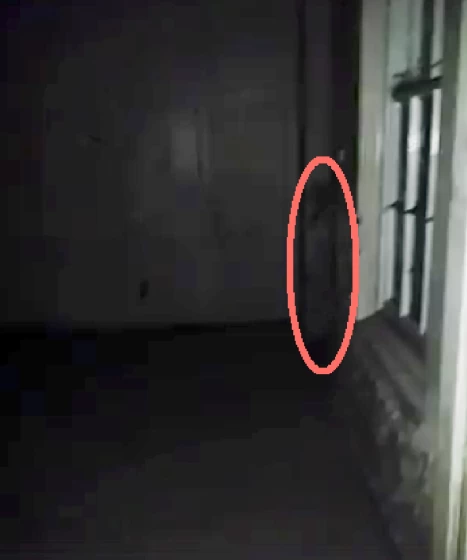
Another example I have again was caught at Aradale Lunatic Asylum. There are very dark corridors and lots of windows. I took some images using a camera that had been converted to IR. In my images, I had appeared to catch a tall shadow man standing in the doorway. I lightened up the photo and thought wow! Now every investigator knows that when you are shooting photos, you take at least 3 photos from the same spot. This is so that you can see if there are any differences in the other photos which are manipulating the environment or if the change is appearing from nowhere. I noticed this shadow figure was in the same position in all of the photos. This was the first red flag. I then went back and found footage taken while walking down this same hall. At the back of the room behind the doorway was a fire extinguisher on the wall. What I was looking at was not a tall dark shadow figure but in fact a fire extinguisher. It took a couple of weeks to debunk this one as I had to go through a lot of things. It was pretty disappointing to be honest with you because at the time I was fairly new at investigating and I thought I had caught something. Again if this had not been properly researched, people would think I have caught a shadow figure on film. While I wish I really did catch a shadow figure on film, sadly again it was a rational explanation.

You can see how important it is when reviewing photos to be aware of your surroundings. This is the easiest way to debunk pareidolia. Even though it is your brain working against you, you need to use your brain to think your way out of it. The concept of pareidolia also exists beyond photographs. This is what a lot of investigators don’t realize or don’t stop to think about, especially in an investigation. You are in a dark room. All of a sudden you see what looks like a shadow figure walking across a doorway. Did you really see a shadow figure? Are you sure the light and your brain aren’t working together to trick you? Maybe a car drove past outside and changed the light coming through a window down the hallway and your eyes have interpreted this light change to be a shadow figure. Using pareidolia, anything can essentially be debunked, especially by a skeptic. This is why it is important to be objective but also trust your gut instinct too. Most of us would not be investigating the paranormal and continuing to do so if we had not have encountered things that we cannot explain. An important part of being an investigator is looking at all possibilities rational and paranormal and making a conclusion of what you think is based on the information in front of you. This is why I really recommend carrying a notebook with you and writing it down as much as possible. Take photos of every room of a location so you can see where things like fire extinguishers are, as you may need to refer to them later. Try to video all of your investigations. Not so that you can potentially capture something on camera, but it is a good record of where everyone is in a particular moment. Video footage can debunk quite a lot of paranormal experiences.
Audio Pareidolia
Did you know that some people argue EVP’s are a form of auditory pareidolia? The same concept where instead of your brain trying to make sense of images it cannot process it is doing the same things with sounds. A sound that the brain cannot process all of a sudden sounds like ‘hello’. Perhaps this is why with a lot of EVP’s if you have 5 people listen to the EVP without telling them what you think it says, it is likely they will all come back with a different interpretation of what is being said. This is why unless it is a Class A EVP it usually isn’t worth worrying about (see my previous article about the basics of EVP for more information). Have you ever heard of people playing music in reverse usually heavy metal music and they think they can hear satanic phrases or devil-worshipping incantations? More likely again their brain is interpreting what it cannot understand. Perhaps your religious beliefs influence how you are interpreting this information and hence why there was the famous Jesus in a grilled cheese sandwich story. Again it all goes back to our brains.
Facial recognition
As we move ahead in the world of technology, technology is 'trained' to recognize a face. From logging into our phones to facial recognition on security camera systems, our faces are being 'recognized'. It seems however that in the same way the brain can have difficulty recognizing faces, so too can this technology. I often see on social media people posting photos from snap chat or Instagram where it seems their phone has picked up a mysterious figure and put 'dog ears' on it where there is nothing there. A lot of people jump to the conclusion that this is paranormal. Sadly it is not. While you may feel like there is something around you at the same time, in this instance, in the same way, pareidolia works, the technology is trying to 'recognize' faces. It is specifically looking for faces. If it finds a pattern that it can turn into a face, its programming tells it that it has found a face and you get it putting 'dog ears' on someone that isn't even there.
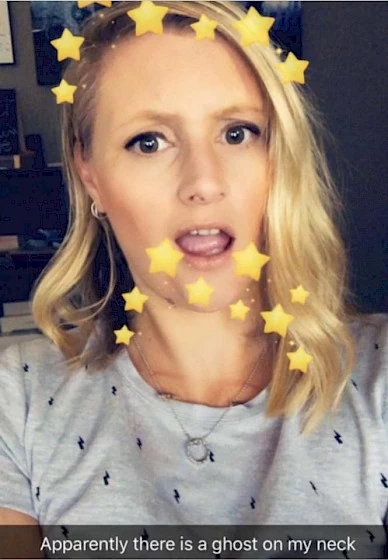
It is quite common these days for investigators to use Xbox Kinect cameras or SLS cameras or similar which map stick figures. It is thought that if it maps a stick figure randomly it could be a spirit. This technology works in a similar way as above. It is constantly looking for things to map and this is why you will see it mapping figures that match the size of the doorway etc. Technology is not failsafe and any results using any sort of technology that uses a form of mapping technology should have results carefully reviewed due to the high risk of false positives. A perfect example is that it will suddenly map a figure in the doorway. You will notice that this stick figure is the same height and width as the doorway. In this case, it is mapping the doorway, not a mysterious figure standing there.
I guess these are the kinds of things as investigators we need to be very aware of, research, and understand. Pareidolia, matrixing whatever you want to call it is a form of Apophenia which derives from theories from doctors who have studied schizophrenia and implies that there is a human tendency to seek patterns in random information. These same people could debunk all haunting or paranormal activity as simply our brains trying to make sense of something. At the end of the day, it is a skeptic's right to not believe and it is also my right to believe in the paranormal. Investigators simply take it that step further by trying to understand it more and prove it to a certain extent. This is why the concept of pareidolia is important for an investigator to fully understand. It is not just limited to photos we are presented on Facebook. It comes into a lot of what we do. It is important to admit when we are wrong. If you have a photo and people are able to prove it is pareidolia, let it go. I know we become attached to our photos, especially if there was other stuff happening at the time. 99% of what happens can be explained rationally and we know and embrace this. At the end of it all, we are always left with that 1% that for some reason we can’t seem to explain that 1% and that is why we keep chasing.
If you enjoy LLIFS, consider buying me a book (otherwise known as buy me a coffee but I don't drink coffee and I LOVE books). Your donation helps to fund the LLIFS website so everyone can continue to access great paranormal content and resources for FREE!

Top pages with similar subjects
Don't forget to follow the Facebook page for regular updates
Join the mailing list to receive weekly updates of NEW articles. Never miss an article again!
Buy the latest and past issues Haunted Magazine
Check out the books written by LLIFS
Comments
-
Anna Trace 5 years ago
I have a picture I would like for you to look at. I don't want to assume you will, so will await saying you will, or won't. If you will, not will forward the picture.
Thank You and God Bless,
Anna Trace
-
LIVING LIFE IN FULL SPECTRUM 5 years ago
Hi Anna, you can email it to me on sarah@livinglifeinfullspectrum.com.au I don't normally review photos but I can have a look.
I will be honest in what I think it is which usually is not a paranormal explanation. sometimes people don't like that, but if you would still like me to have a look, feel free to send it!
Thanks
Sarah
-